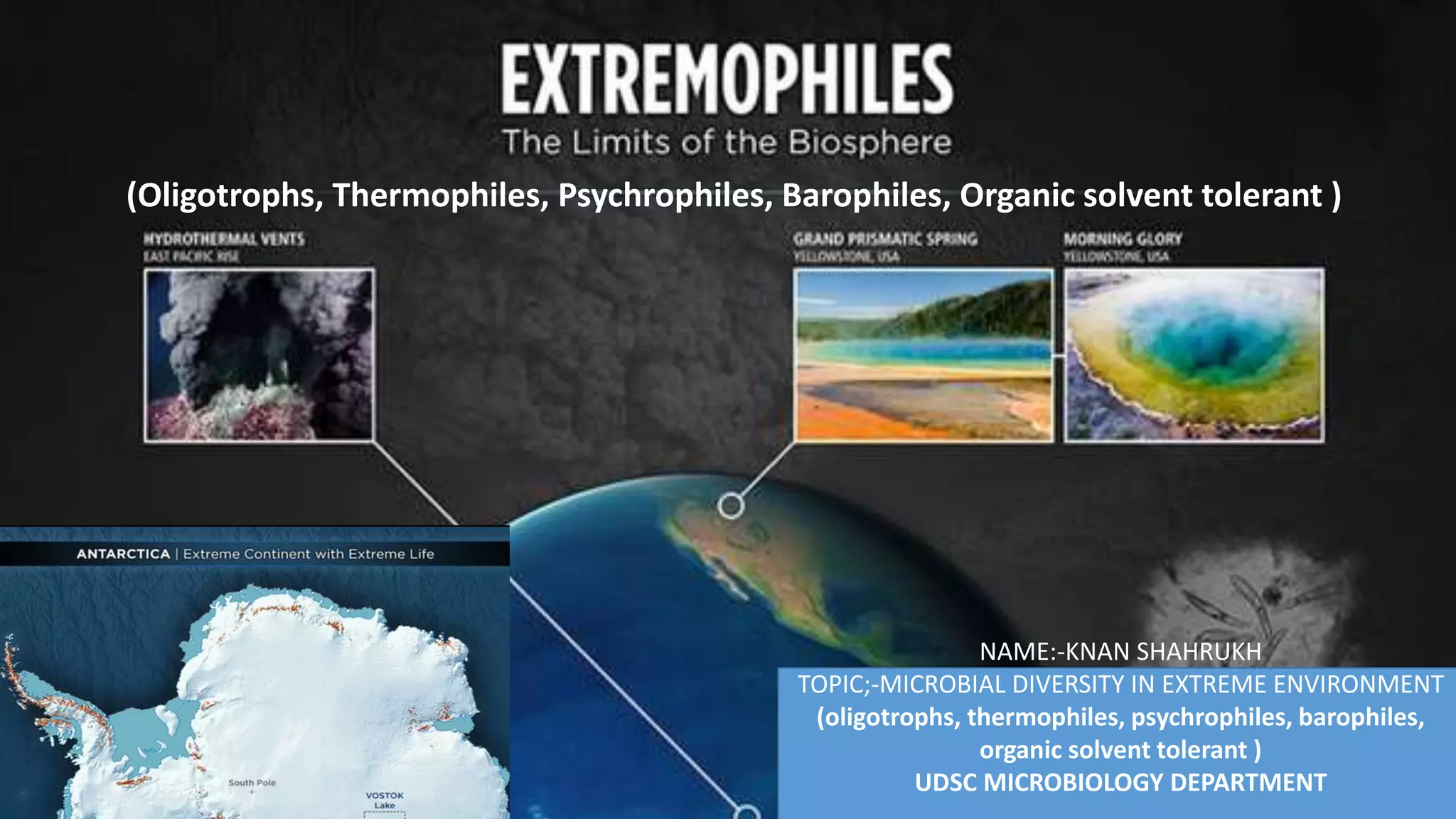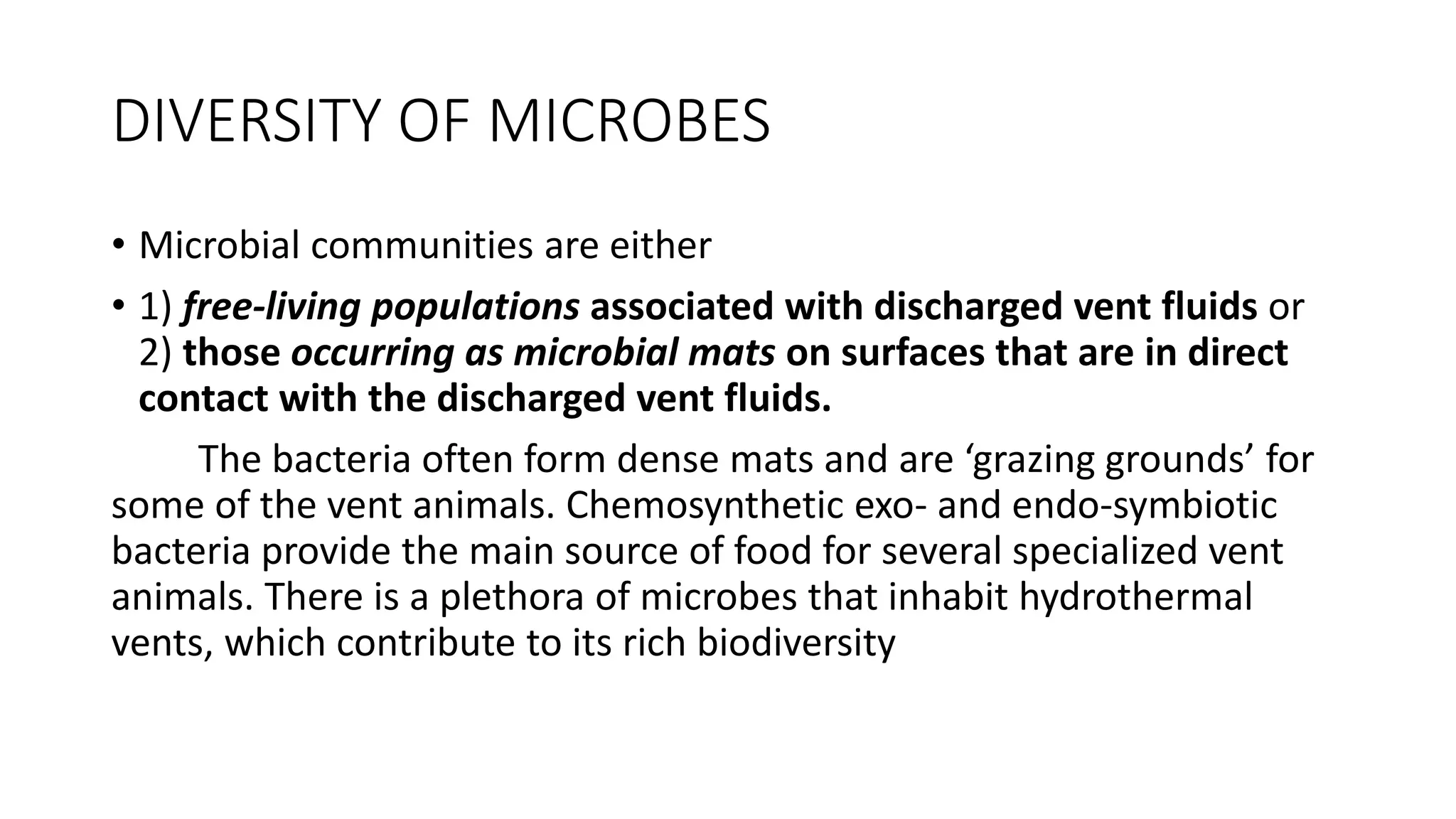The document discusses microbial diversity in extreme environments, categorizing organisms such as oligotrophs, thermophiles, psychrophiles, barophiles, and those tolerant to organic solvents. It details various extreme habitats including alkaline, acidic, hot, cold, hypersaline, and those under pressure or devoid of water and oxygen, while exploring the adaptations that allow these microbes to survive and thrive. Additionally, it touches on the biotechnological applications of these organisms and their ecological significance.























































